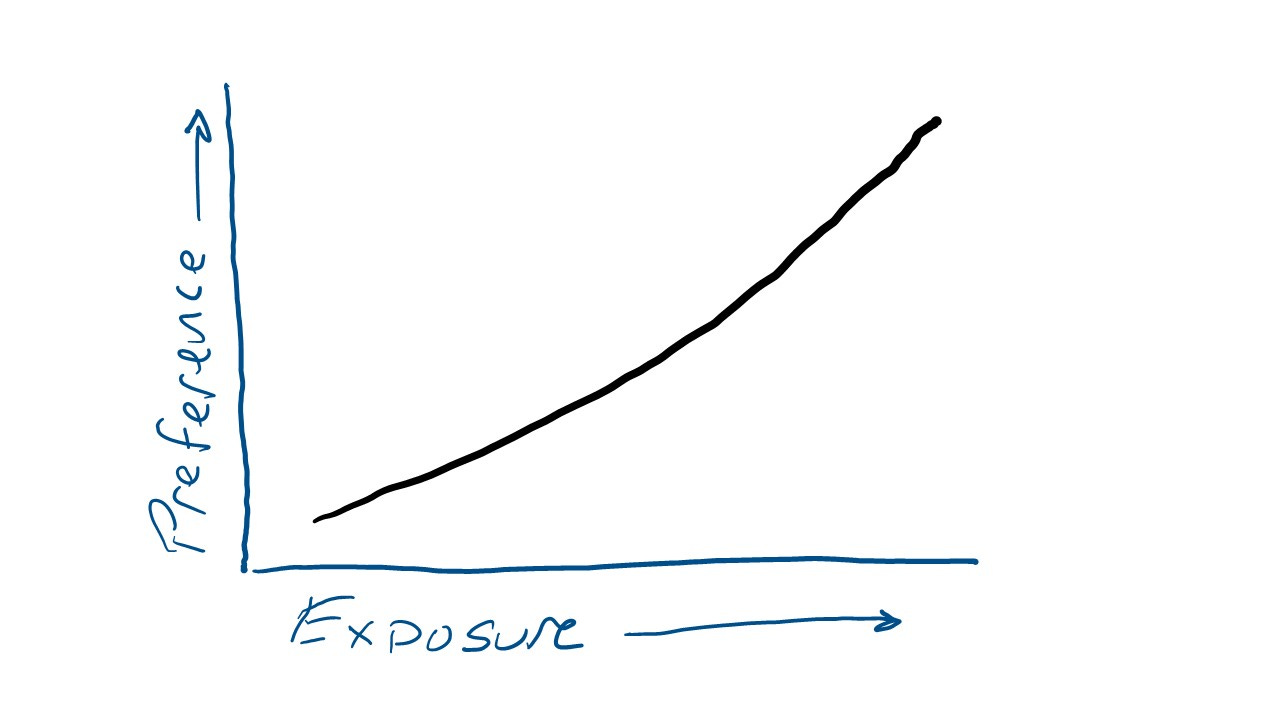The Mere Exposure Effect
Have you ever noticed that you like what you see when you look in the mirror, and then when you look at pictures of yourself, you sometimes don't even recognize your face, or at best, you don't like very much what you see? That's because of the mere exposure effect. We see ourselves in the mirror the same way every day, but the angles on images don't often show how we look at ourselves unless we're taking a selfie; hence they have become so popular.
Music works the same. Songs we know we like more than songs we don't know. That's why when you market your music, you should not aim for clicks to a DSP, but your aim should be to reach as many people as possible, as often as possible, and as organic as possible. Which means you have to aim for getting shares.
At the time of writing this, and probably for a long time into the future, all attention is on TikTok. It's the one place you can build mass familiarity for your song and drive incredible amounts of streams. That's great. Unfortunately, to get there organically is very difficult, if not impossible. It takes influencers to use your song, i.e., they will create a short music video using your song. It can take 10's thousands of dollars in campaign spend to reach enough people to build effective reach, so hundreds of thousands or even millions of videos are created organically, building massive familiarity. There is, of course, one caveat. You're building awareness for a 15 or 30-second hook and not for your artist brand; that's another ball game. However, if you can't make TikTok work, there are still other platforms that allow you to keep building your profile and fan community. Slower, but potentially more reliable. On any platform, the video asset is still absolutely vital. Video is how people communicate on social media. Whatever you write in your post text is practically irrelevant because it won't make anyone stop scrolling. So it is your video asset that makes or breaks your campaign, and just like on TikTok, you will know pretty much straight away if your video asset communicates to people or is silent.
Now you're building ads on Facebook and Instagram. In most cases, Facebook is more effective. It may have lost some relevance with 13 - 16-year-olds, but above 16, it is still the platform with the most reach, and Facebook is working hard to keep it that way. Ads are getting more expensive, but it still works out cheap compared to other platforms if your asset performs well.
The key is not to aim for traffic. Don't try and generate streams to DSPs. You want to build reach, and for that, you need shares. Every click away from the platform is potentially a share lost. Someone sharing your music with their friends is the most powerful way to build reach. It's one thing to get people to watch your video; it's another thing to get them to push the like button, but it's an entirely different thing to have them share it. That's what you want. You can always leave a link to your DSPs in the comments and rank your comments by relevancy, and you will generate some traffic.
But what you want is people to love what they hear and see and go over to Spotify and search for you. Your video asset on Facebook won't be a 15-second asset; it will be the whole song or at least 2 minutes. To make these 2 minutes compelling isn't easy. If you don't get a share ratio of 1:4, i.e., every four likes you have, one person sharing it, go back to the drawing board. You should at least get 16 likes(USA) per dollar you spent; otherwise, you don't have a thumb-stopping video.


